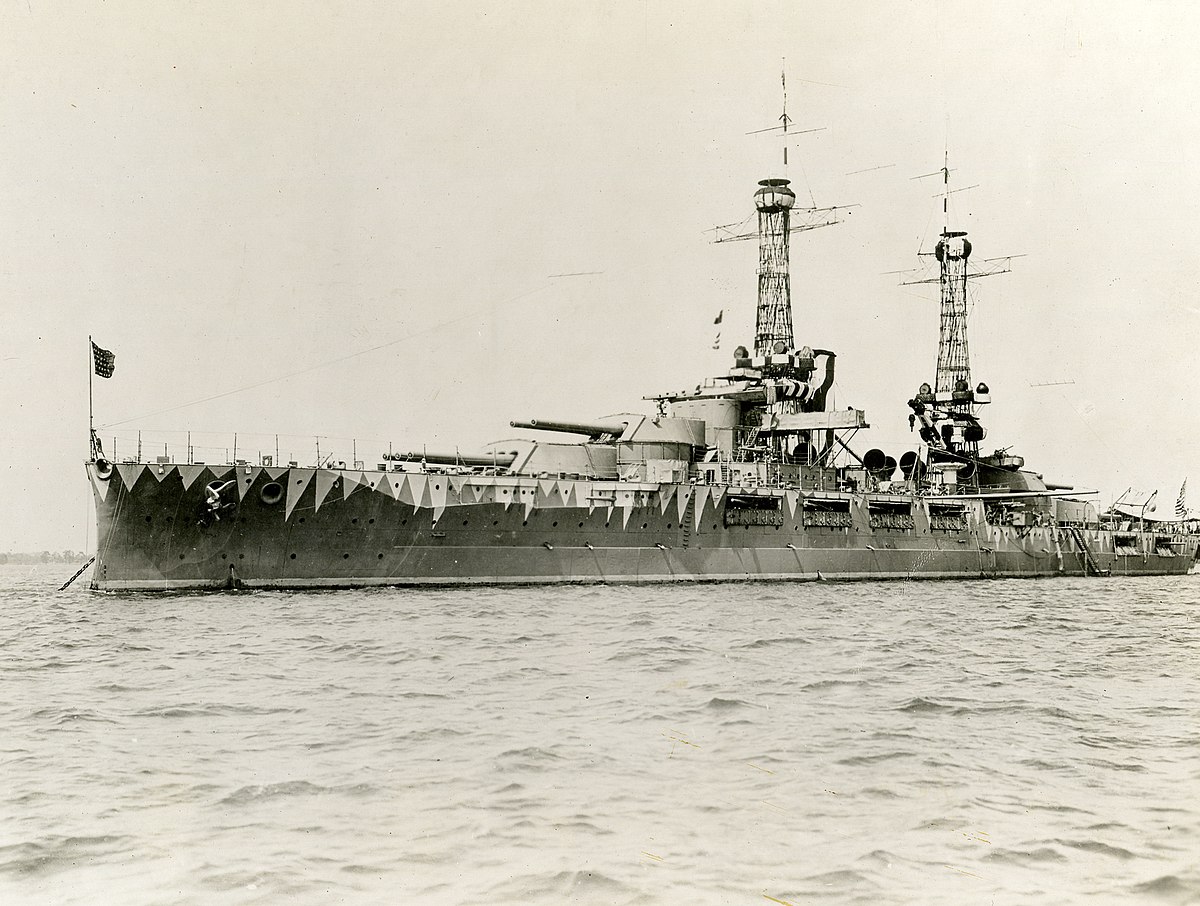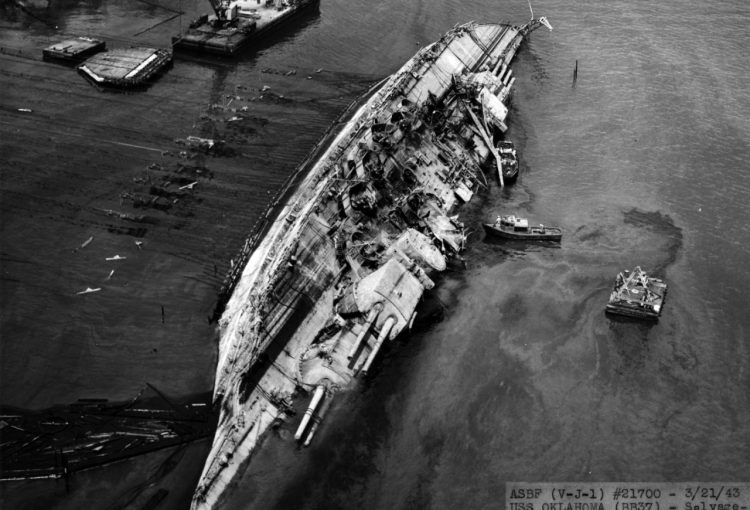How the DPAA USS Oklahoma Unknown Project Relates to the USS Arizona Project

How the DPAA USS Oklahoma Unknown Project Relates to the USS Arizona Project
A very successful project done by the Defense POW / MIA Accounting Agency (DPAA), the USS Oklahoma Unknown Project is a bit of a model for the U.S.S. Arizona Project that is being supported by an ever growing base of USS Arizona family members. They are trying to accomplish something very similar, so looking at both the USS Oklahoma Project and the USS Arizona Project will help to provide some insight into what to expect.
“We are embarking on a project very similar to the USS Oklahoma Project to identify our potential family members”, said Kevin Kline, a great nephew of a unrecovered sailor and who is spearheading the effort to rally the families together. 85 or more USS Arizona unknowns currently are buried 10 miles away from Pearl Harbor in commingled graves marked only as “unknown” at the National Memorial Cemetery of the Pacific in Honolulu. While the DPAA isn’t involved quite yet in the effort to make this a reality, this project seems to be getting off the ground in a similar fashion with the families, as the USS Oklahoman Project did. “We are starting this as a grass roots effort”, Kline stated, “lead by the family members of the Arizona unknowns.” The goal is to meet the minimum threshold of 643 family member DNA samples, to match to the remains and to have the DPAA reclassify the USS Arizona Unknowns as a “working priority”.
A source within the DPAA organization who asked to remain anonymous, stated that the Arizona unknowns are a sensitive topic within the DPAA. Mistakes have been made and even some people were fired by the mishandling of one of the USS Arizona unknowns that was “accidentally” disinterred during the Oklahoma project and quietly put back without identifying. The majority of employees want to see the USS Arizona unknowns be identified and the project to be announced, but the leadership of the DPAA prioritizes politics and funding, among other things….and therefore “cherry picks” the easier projects. Admittedly, the amount of work involved with the USS Arizona project would be a large undertaking, but not impossible, it’s just not a priority within the leadership”
In 2015, the current DPAA Director Kelly McKeague, made a proposal to disinter all the unknowns without making any attempt to identify them and place those remains within the USS Arizona. Which would shut down any possiblity to identify the unknowns of the Arizona in the future and is the complete opposite goal and mission of the DPAA. The DPAA also has made no effort to search for or contact family members whose loved ones may have been affected by such a proposal. Luckily the proposal was stopped in its tracks by media attention and some family members that spoke out against the idea.
Below, we will look closer at the USS Oklahoma Project and compare it to the USS Arizona Project. This will help to give you some insight into what this project is all about and what we hope to accomplish.
What is the USS Oklahoma Unknown Project?
In 2015, a special six-year project by the Defense POW/MIA Accounting Agency began exhuming service members from the USS Oklahoma. This work brought families together with their long-lost loved ones and fulfilled America’s promise to bring home those who have died while serving our nation.
This project seeks to recover human remains from ships through DNA testing, returning identified remains to their families. This effort is a joint venture between the Department of Defense POW/MIA Accounting Agency (DPAA) and Army DNA Analysis Command’s American Forensic Diagnostic Laboratory in Honolulu, Hawaii.
What is the story behind the USS Oklahoma?
In December 1941, a battleship aboard the USS Oklahoma was struck by surprise Japanese torpedo attacks in Pearl Harbor, sinking it and ensnaring hundreds of sailors and Marines inside. Ultimately, it capsized and sank in its muddy bottom after taking multiple hits from these missiles.
Salvage crews were able to right the ship by attaching cranes to shore and creating uprights and winches that turned its overturned hull. This was one of the largest salvage jobs completed by the Navy during World War II, but only part of a much larger effort to right and refloat the battleship.
How the USS Oklahoma Project Began
After World War II, the United States government assigned the American Graves Registration Service with identifying and recovering the remains of fallen service personnel in the Pacific Theater. AGRS collected these remains and disinterred them at two cemeteries in Honolulu: Nu’uanu and Halawa.
After this, the AGRS transferred the remains to the Central Identification Laboratory at Schofield Barracks in Hawaii for further testing and identification. Through their efforts, thirty-five men from the USS Oklahoma were positively identified.
However, the case for most unidentified crewmen on board the USS Oklahoma appeared to be closed until 2003 when Ray Emory disinterred a casket thought to contain five unknowns at his request. Scientific analysis revealed that it actually contained partial remains of almost one hundred men – six of whom were identified – which led to the 2015 USS Oklahoma Project and ultimately led to identifications in 2016.
This mtDNA test, called hypervariable regions 1 and 2 mtDNA testing, is being utilized to identify these crew members. This type of analysis differentiates individuals based on their mtDNA polymorphisms in comparison with those in a database.
Similar to any other mtDNA test, AFDIL requires skeletal elements and a family reference sample be sent to the lab. They will sequence these elements and identify any unique mtDNA polymorphisms present. Finally, these elements are compared with other recovered skeletal elements and FRS from the ship.
The outcome is a comprehensive spreadsheet that compares each element and its associated FRS to all other elements and service members in the database. Furthermore, it assigns an X-number unique to each element which serves as information about when and how it was recovered from the ship.
Furthermore, this number plays a vital role when grouping DNA elements into sets for matching with living relatives – helping determine how best to efficiently utilize all this testing data.
How the USS Oklahoma Project Unfolded
1. Human remains were recovered from the ship’s hull
On December 7, 1941, the USS Oklahoma was torpedoed and sunk during the Pearl Harbor attack on Hawaii, burying hundreds of sailors and marines. From December 1941 until June 1944, Navy personnel recovered the remains of those who perished and interred them in Halawa and Nu’uanu Cemeteries on Oahu.
In 2003, a single casket containing five cranial/mandibular segregations associated with the USS Oklahoma loss was unearthed from Punchbowl Cemetery in Hawaii and analyzed by DPAA Laboratory to reveal partial remains of nearly 100 individuals.
Following the disinterment, dental records and DNA analysis enabled the identification of over 90% of 394 unidentified crew members.

2. The ship was refloated
On December 7, 1941, when the USS Oklahoma was hit by torpedoes during Japan’s attack on Pearl Harbor, 429 crew members perished. The ship plummeted rapidly and many sailors perished within minutes after the initial strike of a torpedo.
After the attack, Navy personnel recovered human remains and interred them in Hawaii cemeteries. Unfortunately, many of the crewmen who perished aboard the ship remain unidentified.
After the war, the Defense POW/MIA Accounting Agency launched a project to identify service members from the USS Oklahoma who remained missing. This effort proved successful, leading to the identification of more than 100 of the ship’s casualties.
The USS Oklahoma Project is an extensive and intricate undertaking requiring the collaboration of several agencies. But it’s essential to remember that this effort also benefits the families who perished on that fateful day 74 years ago.
3. The ship was reburied
Unidentified USS Oklahoma crewmen were reburial in 46 plots at the National Memorial Cemetery of the Pacific in Honolulu. Unfortunately, those who could not be identified were classified as non-recoverable and buried without a name.
The USS Arizona Project – “Operation 85”
After Japan’s surprise attack on Pearl Harbor in December 1941, a major effort was made to move the Arizona’s massive guns and turrets out of harm’s way, positioning them at strategic locations to safeguard O’ahu’s naval bases and seaports. Two of Arizona’s triple-gunned turrets were relocated to Kahe Point at a high elevation on O’ahu’s leeward side, while another was situated near Mokapu Point across windward.
In all, 1,177 men perished aboard the USS Arizona, making it the deadliest ship to sink during World War II. Today its wreck, situated near Ford Island on Oahu’s west coast, serves as a national memorial.
The USS Arizona Project is an initiative to preserve the history and artifacts of the USS Arizona, which sank during Japan’s attack on Pearl Harbor in Hawaii on December 7, 1941. Additionally, it seeks to identify and locate its wreck and provide a digital archive as a memorial.
For further details about the Arizona Project, please visit the USS Arizona Project website.
Identifying the Lost Crew Members – “Operation 85”
The main goal of Operation 85 is to find the families of the U.S.S. Arizona crew members in an effort to identify, through DNA, the 85 of more unknowns from the USS Arizona. The project has set a goal of completing the process by or before the 85th anniversary or the attack on Pearl Harbor, which will be December 7th, 2026.
In order to identify the lost crew members, we must college DNA samples from family members. A total of 643 samples are necessary before the DPAA will get involved and help with this project. We have partnered with museums, schools, parks, military, and veterans associations to help spread the world about the unknown USS Arizona crew members.
How the USS Oklahoma Project is Similar to the USS Arizona Project
In 1941, the USS Oklahoma suffered a tragic loss of 429 crewmen during the attack on Pearl Harbor – its death toll being second highest among any ship at that time.
Today, families of those lost aboard the ship are provided closure through the USS Oklahoma Project. It was an ambitious but successful undertaking.
The goals of the USS Arizona Project “Operation 85” are similar to those that the USS Oklahoma Project achieved. We are working to get the 643 DNA samples we need to get the DPAA involved so that we can identify as many of the remains as possible.
While these two projects are certainly not exactly the same, there are very similar in scope and mission. By identifying the remains, we can help provide closure and fill in gaps for families that may not know what happened to someone in their family lineage that was lost.
How You Can Help the USS Arizona Project Operation 85
If you believe one of the 85 unknowns was related to you, the best way you can help our project is by submitting a DNA sample. Even if you don’t think you have a relative that was one of the unknowns, you can help by sharing our project with others. There are many ways to support our mission to identify these lost soldiers.
You can also purchase a shirt or another souvenir from our website store. Make sure to share our website on social media and with anybody you know that might be connected to the USS Arizona.
